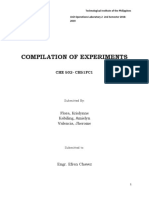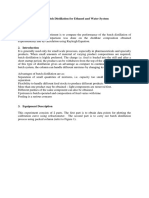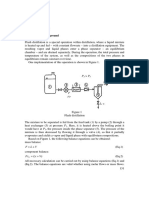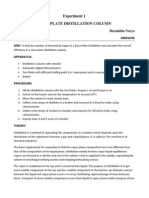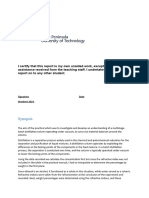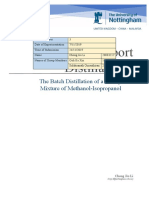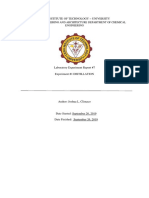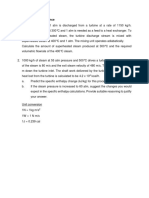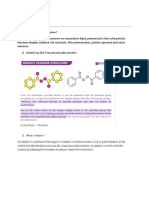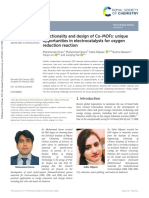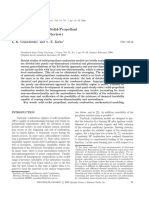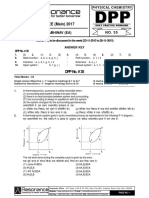0% found this document useful (0 votes)
106 views16 pagesDistillation PostLab Final
This document summarizes an experiment on distilling an ethanol-water mixture using differential distillation. The objectives were to find the best temperature and reflux ratio combination to produce the highest purity distillate in 30 minutes and validate relationships between variables. An initial mixture containing 20% ethanol by weight was distilled at 80°C with 75% and 50% reflux ratios. Data on distillate composition over time showed highest purity for 75% reflux. Theoretical vs experimental distillate compositions agreed at this temperature.
Uploaded by
Anthea Bettina FresnozaCopyright
© © All Rights Reserved
We take content rights seriously. If you suspect this is your content, claim it here.
Available Formats
Download as PDF, TXT or read online on Scribd
0% found this document useful (0 votes)
106 views16 pagesDistillation PostLab Final
This document summarizes an experiment on distilling an ethanol-water mixture using differential distillation. The objectives were to find the best temperature and reflux ratio combination to produce the highest purity distillate in 30 minutes and validate relationships between variables. An initial mixture containing 20% ethanol by weight was distilled at 80°C with 75% and 50% reflux ratios. Data on distillate composition over time showed highest purity for 75% reflux. Theoretical vs experimental distillate compositions agreed at this temperature.
Uploaded by
Anthea Bettina FresnozaCopyright
© © All Rights Reserved
We take content rights seriously. If you suspect this is your content, claim it here.
Available Formats
Download as PDF, TXT or read online on Scribd
/ 16










